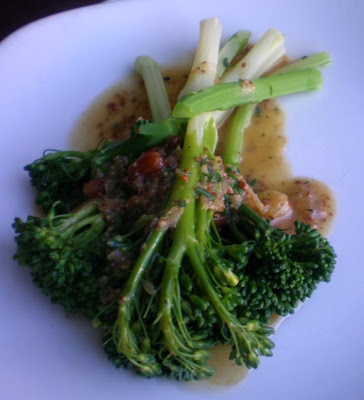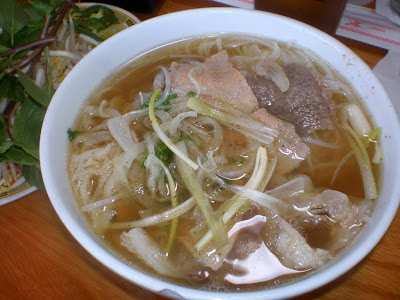I've got the page numbers done."
-Steven Wright
This blog is going on hiatus for a while. I am suffering from a dreadful mental condition.
Writer's block
I write for a living. My law practice is writing. I teach a class on writing. I even am writing a book, which I have to finish by January.
So it makes no sense that I have writer's block. But I do.
A few weeks ago, I promised that my next post would be about Thai curry. I haven't been able to write that post -- or any post. For some reason, I lost all inspiration to write about food.
First Try: Asia Market
After starting a curry series, I knew I had to write about Thai curries. They are my favorite curry. But they also don't quite fit our concept of curry. Surely there would be much to write.
I sought inspiration in Asia Market's wonderful red curry, Kang Dang.
I planned to argue that Thai curry is not what we think of as curry. It is not a mix of dry spices. (Massamun is the exception). Instead, Thai curries are a mix of hot peppers, coconut milk, onion, kafir leaf, galangal or ginger, and other garden (or jungle) ingredients.
Thai curries are usually about the balance of the sweet creaminess of coconut milk and the heat of the peppers. They are not curries as in an earthy blend of spices, like an Indian or Pakistani curry.
Beyond that, I could not think of anything interesting to say. What to do? Maybe eat more curry?
Second Try: Vieng Thai
A curry on the menu at Vieng Thai caught my eye. Gang Pa is a "country-style red curry without coconut milk." I wondered, without coconut milk, would it still be Thai curry?
This dish was more like a spicy pepper soup. It lacked the sweet/spicy/sour balance of most Thai dishes. It was just spicy and sour, like a really peppery bowl of Tom Yum. Apart from the peppers, I couldn't decide what made it a curry.
So what is curry? Heck, I have no idea now. The word curry doesn't make any sense.
Is it a mix of spices? Not if you include Thai curry. Is it a hot and spicy sauce? Not if you include Japanese and French curries, which have little heat at all. Is it a thick Asian sauce? Not if you include Gang Pa, which has the consistency of a thin soup.
Worse, curry is a fascinating food. You could write a book about curry. But I can't. I seem to have lost the ability to say anything interesting about food at all.
Why a hiatus?
A few months ago on Technology Bytes, Jay Lee criticized Houston food bloggers. He asked what expertise they have to write about food. Is it because they eat? We all eat, Jay argued -- in his snarky way. So is everyone qualified to write a food blog?
I have no qualifications other than the fact that I think a lot about food and culture. [If I have something interesting to say, then I'm qualified.] But when I don't have anything interesting to say, Jay is right. There is no reason to write a blog.
The new restaurants are not inspiring . . . yet
Perhaps I will find inspiration in all the restaurants opening this fall. But probably not.
Straits is a good attempt at upscale Malaysian. But honestly I don't have much interesting to say about it that I haven't said about the more interesting, and cheaper Banana Leaf.
Haven might be worth a post or two - if it ever opens.
And Stella Solla is at least giving us a lot of gossip. But I don't write much gossip.
The other 10 or so high-profile restaurants opening this fall sound pretty dull, pretty mainstream.
New steak restaurants? Yawn. A seafood restaurant inspired by Boston's Legal Seafood? Yawn. A gastropub serving short ribs? Yawn. Italian restaurants by chefs or restauarantuers who peaked in 1990?
I could go on. The crop of new restaurants two years ago was fantastic, perhaps the best Houston has ever had.
This year, the bad economy means retreading, going with the safe bet, simple foods. I understand. I watch Gordon Ramsay. But I'm not inspired.
So for the next several months I am going to go to Disney World (Tim Keating is at Flying Fish), write my book (not about food), and practice law. Maybe the New Year will bring me some sort of inspiration.
Maybe we can talk more then.
Bye.



















































